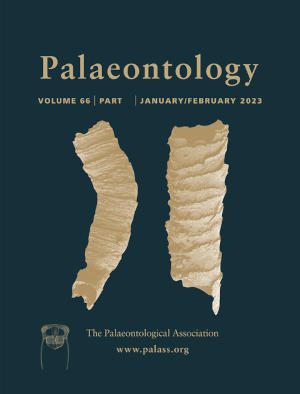Article: Quantifying the gastral mass in Early Cretaceous ornithuromorphs (Aves, Ornithothoraces) from the Jehol avifauna
Publication: Palaeontology
Volume:
66
Part:
5
Publication Date:
2023
Article number:
e12677
Author(s):
Shumin Liu, Zhiheng Li, Di Liu, and Jingmai K. O'Connor
Abstract
Abstract Some birds intentionally ingest stones to facilitate digestion of hard foodstuffs, a behaviour inherited from non-avian dinosaurs and present in some of the earliest birds, as evidenced by clusters of gastroliths preserved within the abdominal cavity of a wide range of dinosaurs and Cretaceous birds. For the first time, high-resolution computed laminographic and computed tomographic scans were used to reconstruct the gastral mass in two species of non-neornithine ornithuromorph birds from the Lower Cretaceous Jehol Group. Four specimens of each taxon were analysed. Preservation of the gastral mass in most of these specimens is in situ and regarded as complete or nearly so. The number of gastroliths, their total volume, and their total mass relative to the estimated body mass were calculated for each specimen. The resultant gastral mass to body mass ratios fall within the range observed in extant birds, supporting previous inferences that the digestive system in non-neornithine ornithuromorphs was comparable to that of extant taxa. Compared to available data for non-volant non-avian theropods, the gastral mass is proportionately smaller in birds suggesting that the evolution of flight constrained gastral mass size in the theropod lineage. Currently available data on gastral mass characteristics suggests that Iteravis ate larger food particles compared to Archaeorhynchus but cannot be used to determine diet more precisely. Better understanding of the relationship between gastral mass characteristics and food items across a broader range of extant taxa may provide an indirect but important method through which to infer diet and digestive function in archosaurs.
